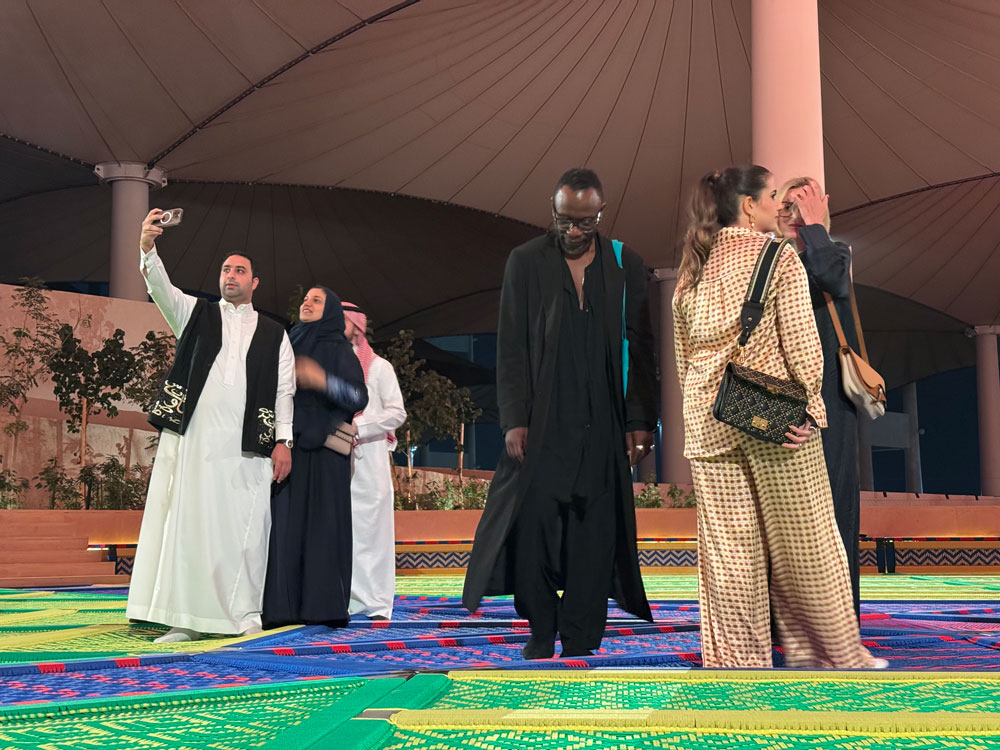LAHORE: As Tim Hortons, an international coffeehouse, continues to draw large crowds in Pakistan’s culinary hub of Lahore, an economist says one cannot draw comparisons between the economy and people’s purchasing power because “it is always a question of macroeconomics.”
On February 11, Pakistan opened its doors to Canadian multinational coffeehouse and restaurant chain Tim Hortons, which made the highest single-day sales for any outlet of the global franchise in the world.
“We made a global record. We reached up to the highest number in 61 years [in the history of Tim Hortons]. The international team was also here. They were tracking the transactions and everything,” Adnan Bhatti, head of operations at Tim Hortons Lahore, told Arab News on Saturday.
Bhatti didn’t reveal the exact number due to international restrictions. However, he said the outlet opened at 7:30am on the opening day and closed around 11pm. Even then, Bhatti said, people were standing inside but Tim Hortons had to pull the shutters down due to government restrictions.
“We dealt with over 13,000 guests on the opening day. The queues you saw outside the outlet were totally fair. Even now, as we talk, 60-65 people are standing in the queue,” added Bhatti.
Pictures of coffee enthusiasts forming long queues outside the restaurant have since gone viral on the Internet, with netizens pointing out how the sight was in stark contrast with the current economic meltdown in the country, with inflation going through the roof, local currency depreciating by the day, and the foreign exchange reserves falling to critically low levels.
But Pakistani Neuro-Economist Dr. Abdul Jabbar Khan said the opening of Tim Hortons was a “positive” development, while the customers shared the public was “richer” than the government and “curious” to try a cup of the much-hyped beverage because of its international appeal.
“[The opening of the outlet in Pakistan shows we are getting] foreign direct investment through locals, through Pakistanis, or through overseas investors. It’s a positive sign and I appreciate it,” Khan told Arab News on Saturday.
“We cannot just [draw] comparisons of poverty or the economic proposition in Pakistan [with people’s purchasing power]. It is always a question of macroeconomics. People of Lahore are a different proposition altogether across Pakistan. They love food, they love eateries.”
The economist said the need of the hour in Pakistan is to control the government expenditures, which the authorities have only attempted “in theory.”
While inflation was not a choice, treating oneself to a cup of coffee certainly was, Mahnoor Shakir, 36, told Arab News, standing in a queue outside Tim Hortons in Lahore.
“I don’t find anything wrong with spending Rs400-Rs500 ($1.92) on myself. Especially, when you are getting something of international standard and quality, from an international chain instead of something over-priced that too is local,” she said.
“International chains coming to Pakistan and sustaining will only help grow our economy, our business stream.”
Aside from a variety of coffee, the newly opened outlet in Pakistan is also serving sandwiches, donuts and baked items.
Customers say the prices of coffee are pretty reasonable and are even less when compared with other known coffee houses in the city.
“It’s priced accordingly so that it is affordable for everyone,” 20-year-old Hadi Ali, who was waiting to get donuts for his mother, told Arab News.
“My mother likes the brand; she has tried it abroad. They [the public] see it’s an international brand so everyone has come out to try it. If it would have been a local brand, there wouldn’t be long queues like this.”
Asad Sheikh, chief operating officer of Lahore’s online food community ‘Foodies ‘R Us,’ said they didn’t expect the turnout to be this huge.
“It’s the number of transactions in one [opening] day which have broken the world record,” he said. “It’s been eight days since the launch, but the queue is as long as it was on the opening day.”
Mohammad Akmal, 60, who came to Lahore from London for a few days, was also standing in the queue with his son to taste the coffee.
“The quality is good. It’s an international brand. My children like it. People are curious, they haven’t tried it or been abroad ever. For them, it’s the brand,” Akmal said.
Noman Naseer, 48, said the people in Pakistan are richer than the government.
“People are enjoying the new brand launched in Pakistan. People are coming and standing in long queues for just a coffee, fries, etc. It’s Pakistan’s culture that if someone is going somewhere, others follow suit whether they like it or not,” he said.
“You will mostly spot people from the upper class [here]. It can be for everyone, but I don’t think so, considering the rising inflation in the country.”
Tim Hortons is expected to open 80 outlets in Pakistan over the next 10 years, according to Sheikh, who said two more branches of the coffeehouse are ready to be opened in Lahore’s Gulberg alone. This will be followed by one in Islamabad and another in Karachi, he added.
Sheikh also believed that the opening of Tim Hortons would benefit the economy.
“The economy works when the money is circulating. This is the circulation of money,” he said. “It’s providing employment and work opportunities to various vendors.”





















